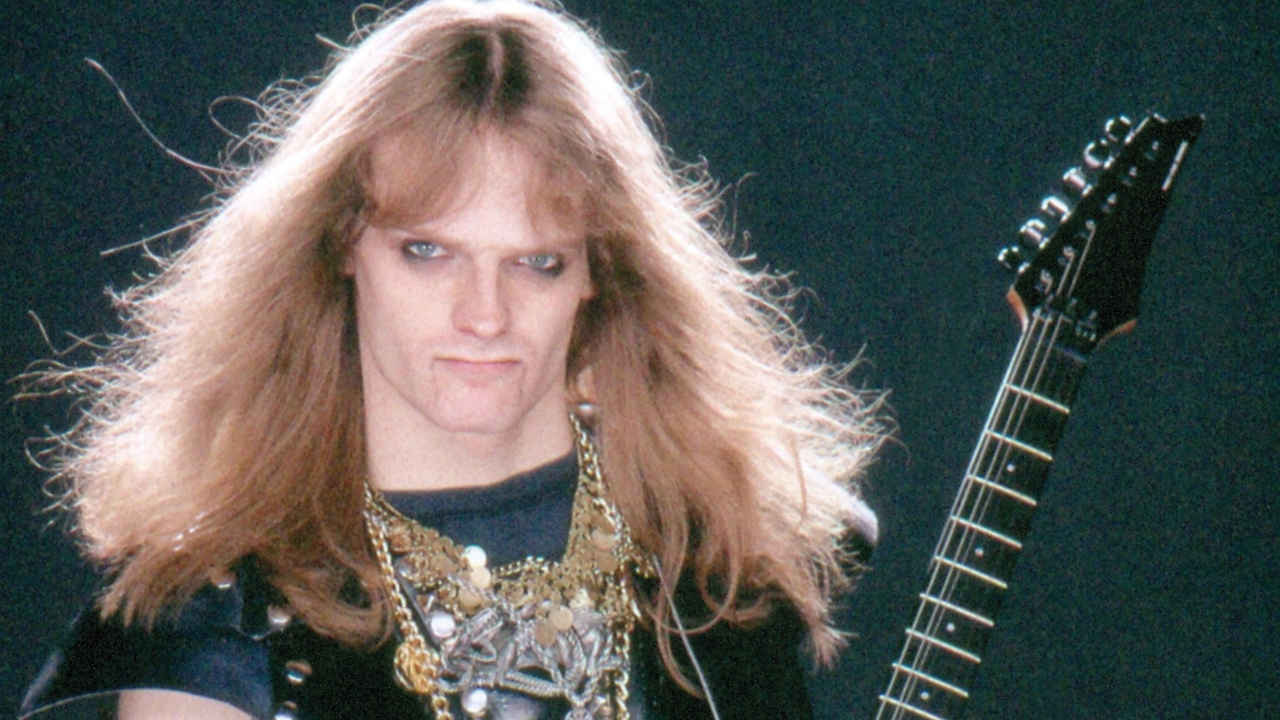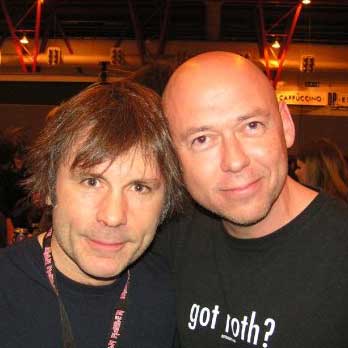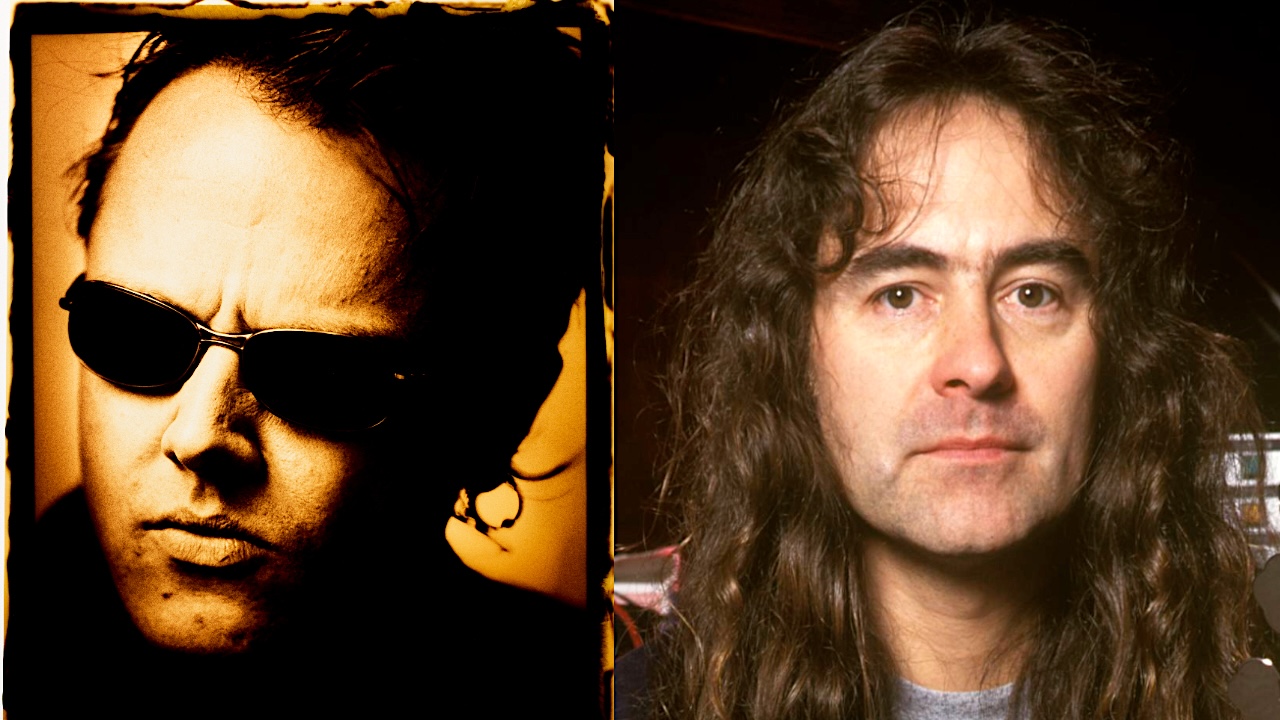Celtic Frost’s Tom G Warrior: “They said I sang like Lemmy with the warts inside his mouth”
From troubled outsider to all-round metal visionary – these are the life and times of Celtic Frost/Triptykon leader Tom G Warrior

He is one of the true innovators of heavy music, and he defines his ethos with complete clarity. “If you call yourself an artist,” Tom G Warrior says, it means “you’re not playing it safe.”
In a career spanning 40 years, in which he has led three key bands – Hellhammer, Celtic Frost and latterly Triptykon – Tom has fought some hard battles and endured some lean times. But, as he says with a wry smile, “I think struggle and suffering are essential artistic tools.”
Born Thomas Gabriel Fischer on July 19, 1963 in a village in Switzerland, he was 12 when he heard Black Sabbath for the first time. “After that,,” he recalls, “nothing was ever the same again.” He named himself Tom G Warrior when he formed Hellhammer, a band that, despite its brief existence, had a profound influence on the development of black metal. And Celtic Frost’s music was even more extraordinary, combining extreme metal with an art rock sensibility.
Frost’s debut release, the 1984 mini-album Morbid Tales, had crushing heaviness in Procreation (Of The Wicked) and Into The Crypts Of Rays, and an experiment in dark ambient music in Danse Macabre. But the 1987 album Into The Pandemonium was their groundbreaking masterpiece, its eclecticism illustrated in tracks such as Tristesses De La Lune, with a female voice reciting French poetry over a string quartet.
What followed was a disaster. The departure of bassist Martin Eric Ain and American drummer Reed St. Mark led Tom to form a new Frost line-up for the 1988 album Cold Lake, on which they sounded, and looked, like a hair metal band. Tom has since dismissed Cold Lake as “an abomination”. Certainly, it killed the band’s credibility. After 1990’s Vanity/Nemesis, with Martin reinstated, the band split, and for the remainder of the 90s Tom made just one more album as leader of the short-lived industrial metal band Apollyon Sun.
In 2001, he and Martin reformed Celtic Frost with guitarist/producer Erol Unala and drummer Franco Sesa. The result was a deep and punishingly heavy album, Monotheist, released in 2006, which proved to be their last. The band broke up in 2008. But in the same year, Tom formed Triptykon, in which he has channelled the spirit of classic Celtic Frost for two monumental albums, Eparistera Daimones (2010) and Melana Chasmata (2014).
And now, while preparing a third Triptykon album, he continues to embrace his past. In 2019, two years after his great friend and key collaborator Martin passed away, Tom began performing Hellhammer’s music under the banner Triumph Of Death. And this summer, he will lead Triptykon to the stage at Bloodstock to play a set of early Celtic Frost songs – the music that made him a legend…
Sign up below to get the latest from Metal Hammer, plus exclusive special offers, direct to your inbox!

What was the first music that had a big impact on you?
“Music was always a huge thing in my life. My parents had a fantastic record collection, from jazz to classical to rock. We were a poor family and my upbringing was extremely chaotic. My father, Klaus Fischer, was a motorcycle racer and journalist. My mother Eva was a tailor, but in the 70s she became a diamond smuggler – and yes, that’s the truth! My parents had constant conflicts and got divorced when I was six, and my mother took a huge part of that record collection with her. She was away from home a lot, sometimes for weeks on end, and I felt very lonely. So I found solace in music, which became my passion and also my sanctuary.”
What led you to heavy music?
“The White Album by The Beatles was fascinating to me because of the bandwidth of musical styles on it, and the song that fascinated me most was Helter Skelter. That was the first time I was exposed to heavier rock. In 1973 I saw Suzi Quatro on TV singing 48 Crash, a bona fide hard rock record. For that time, it was quite unusual to have a woman playing such heavy music, and that aggression really sucked me in.
“Two years later, I bonded with another outcast in the tiny, conservative farm village where I lived, and his older sister made a tape for me with Black Sabbath’s Vol.4 on one side and Pink Floyd’s Wish You Were Here on the other. That tape was really the turning point. When I listened to Vol.4, it’s a cliché, but my life completely changed. I was blown away that such music existed. This music totally corresponded to how I felt. And then, of course, I started exploring. I discovered bands like Thin Lizzy, UFO, Rush, Blue Öyster Cult… and that was when I became not just a listener, but a fanatic.”
When did you start playing guitar?
“Much later. I was intimidated by the level of proficiency in musicians like Michael Schenker. But then came punk, and in 1979 I discovered Motörhead with the Bomber album, and that was closer to what I imagined I might be able to do. I got my first bass guitar in March of 1981 and sat in front of my record player trying to replicate those riffs from Vol.4.”
What prompted your first band, Grave Hill?
“We were influenced by the New Wave Of British Heavy Metal, bands like Witchfinder General, Tygers Of Pan Tang and Angel Witch. We couldn’t find a guitarist who wanted to play heavy music, so we had two bassists, and I just distorted my bass so it sounded like a guitar. We only wrote three or four songs, and unfortunately none of those exist now. There was a rehearsal tape but it got lost.”

After Grave Hill split, you formed a new band, Hammerhead, which developed into Hellhammer. Is it correct to say your key influence was Venom?
“I’d gone to London with the drummer from Grave Hill to buy New Wave Of British Heavy Metal records. This was a pilgrimage! And we discovered Venom’s single In League With Satan, which, again, changed everything. I came home and said, ‘I want my band to be as heavy as Venom!’ And then everybody left!
“But there was one guy I knew, Urs Sprenger, who was into extreme music, so he and I formed Hellhammer. I taught him to play bass, and because we couldn’t find a guitar player, I had to learn guitar. Also, because we loved bands like Raven, which had the Gallagher brothers, and Tank, which had the Brabbs brothers, we said, ‘Let’s be brothers!’ So we became Tom Warrior and Steve Warrior.”
In 1984, you released Hellhammer’s debut EP, Apocalyptic Raids, featuring Martin Eric Ain on bass. This is now revered as a landmark in extreme music, but back then it was met with ridicule.
“Yes, back then it was revered as the bottom of the barrel! One review said, ‘This is the worst piece of music ever!’ It was devastating for us, because this little band had become our world. But we had to recognise that not everybody understood this or was even prepared to understand this. Another review said that I sang like Lemmy with the warts inside his mouth. Sometimes criticism can be very funny.”
But in reaction to this hostility, you and Martin disbanded Hellhammer and started anew with Celtic Frost…
“Noise Records had threatened to drop us, so in one night, May 31 to June 1 in 1984, we created the new band from scratch, taking the best of Hellhammer but adding a million things that we loved. We set very ambitious goals. And this was not just to convince the record company. It was to motivate ourselves.”
Was it your stated aim to create music without limits?
“Definitely. We were metal fanatics, but we were just as fanatical about experimental music. We loved Siouxsie And The Banshees and Bauhaus as much as we loved Slayer. Three of my absolute favourite bands were The Beatles, Roxy Music and Emerson, Lake & Palmer. These were all musical endeavours that combined a million different influences. So for Celtic Frost, we said, ‘Let’s take the heaviness of the darkness of metal but combined with all the other music we love so much.’ And of course, by the mid 1980s, what we now call the extreme metal scene had begun to take shape. When we heard the first Exciter album, Heavy Metal Maniac, we thought, ‘This is phenomenal!’ So we wanted to be part of that movement. We just wanted to do it our own way.”
The mini-album Morbid Tales was a powerful opening statement. But was it with the first full album, To Mega Therion, that your vision for Frost was fully realised?
“Yes. Morbid Tales was so important for us because it was proof of concept, but To Mega Therion was when Celtic Frost really became Celtic Frost. It’s probably the most important album for my own path as a musician.”
That album’s cover art was the painting Satan I, by the Swiss visionary H.R. Giger. How did you get his permission to use it for free?
“We were prepared to pay. We didn’t know how we would get the money, but we wanted it so badly that we would have found a way. I had sent a handwritten letter to Giger in 1984, asking if he would consider cooperating with us. He was at the height of his fame, after his work on the Alien movies, so we didn’t expect him to reply to a bunch of nobodies.
“But he actually called me, and not just once, and he agreed that we could have two paintings, Satan I and Victory III, for free. We were blown away. This was when we made Morbid Tales, but we were so in awe of him, we knew the music had to be better to do justice to the genius of his art. So that’s why we waited ’til To Mega Therion. And this is how Giger became our mentor and later our friend.”
The 1987 album Into The Pandemonium was a work of fearless experimentation. Do you think of this as the definitive Frost album?
“I personally think you cannot separate Morbid Tales, To Mega Therion and Into The Pandemonium. They all are part of a puzzle, and they really define Celtic Frost. But artistically speaking, …Pandemonium was our most ambitious album. I think we were braver than we realised at the time.”
For this, Celtic Frost were dubbed ‘the avant-garde heavy metal band’. How did you feel about that?
“We were taken by complete surprise. But yes, it really described Celtic Frost quite perfectly. We felt flattered, and we felt understood.”
The band was also hailed as “the Sabbath of the 80s”…
“That was also very flattering, but nowhere near realistic. Without Black Sabbath, I wouldn’t be here now. They are untouchable.”
You developed a unique vocal style in those early years of Frost. How did you develop your signature ‘death grunt’?
“I can tell you where it came from – 1970s funk, which is another musical style I love. These grunts were little expressions to support the rhythm. With every Celtic Frost album, we always made sure we had enough death grunts. If not, even if we were already mixing, we’d go back in and add some. And to this day, most of my songs start with one. I’ve been a musician for more than 40 years, and all I’m going to be remembered for is death grunts!”
There is one Frost album you would prefer to forget – 1988’s Cold Lake. So what can you say now about Celtic Frost’s WTF moment?
“It’s a complex story. Noise Records had disagreed with the experimental nature of Into The Pandemonium, so we tried to get out of our contract. We took legal action and got ourselves into major debt, and by the end of 1987 the band had fallen apart. Then, in early 1988, Noise presented a new contract that gave us much more artistic freedom. But there was no band. And I made the colossal mistake of reforming Celtic Frost for this contract with different musicians. I was completely unfocused. And fact of the matter is, Cold Lake is not really Celtic Frost. It’s just a piece of shit.”
Was Monotheist, the 2006 comeback album, the true follow-up to Into The Pandemonium?
“That’s how Martin and I approached it. It was us finding ourselves again as Celtic Frost, and being daring again.”
After Frost split for the final time, you launched Triptykon, promising it would “sound as close to Celtic Frost as is humanly possible”…
“Well, if you study the Triptykon albums, they are exactly like Into The Pandemonium. There’s everything on there, from electronica, to classical, to radical metal, to new wave. Only nowadays, this is normal. The scene has caught up with what Celtic Frost was creating in 1987.”
On October 21, 2017, Martin Eric Ain died at the age of 50 from a heart attack. Can you describe the relationship you had with him?
“Martin was a very unique person and a wonderful friend. He only started to write music at the very end, on Monotheist. Nonetheless, his ideology and philosophy was behind all the Celtic Frost music, and his lyrics were unique. You cannot replace somebody like that. I missed Martin already after my exit from Celtic Frost, and now that he’s gone entirely, I miss him even more.”
Since 2019, you’ve performed the music of Hellhammer under the name Triumph Of Death. What does it mean to you to play that music?
“As we discussed earlier, Martin and I really disowned Hellhammer for a while in order to have a chance with Celtic Frost. So coming to terms with Hellhammer in the early 2000s, as a side effect of reuniting Celtic Frost, was hugely important for both of us. And I began to lament that I never performed this music onstage, so actually doing this with Triumph Of Death is such a catharsis for me.
“It has been an entirely positive experience, although there is some material that is very problematic. In the lyrics to Satanic Rites, I can see now the hatred against my mother, the anger and the pain. But if you go onstage and you perform the song, the audience doesn’t have that context. It’s just a very primitive, violent, misogynist song. And I cannot stand for this nowadays, even if I understand where it comes from. So I will never perform this song live.”
How are you feeling about performing Celtic Frost’s music with Triptykon at Bloodstock?
“Triptykon always plays 50% Celtic Frost music when we go onstage, but I’ve never played Morbid Tales in its entirety in one set, so it should be exciting. It’s also paying homage to the roots of Triptykon.”
Is there a new Triptykon album coming soon?
“Absolutely. I’m trying to record two albums that basically belong together. Some of the material is what would have been the Celtic Frost album Necronomicon, which was planned for many years.”
And so, as you move forward with Triptykon, while keeping the music of Hellhammer and Celtic Frost alive, are you in a good place right now?
“I cannot close my eyes to the world we’re living in – the way we treat nature, the way we treat animals, the way we treat each other. And yet, on a small level, I find myself at a very good place in my career and in my personal life. There has been an enormous amount of struggle in my musical path, but now, as a 59-year-old, I feel very privileged. I’ve had a career that’s lasted over four decades. And looking back, I wouldn’t change a thing.”
Celtic Frost’s Danse Macabre, a deluxe box set of the complete recordings: 1984-1987, is out via BMG
Freelance writer for Classic Rock since 2005, Paul Elliott has worked for leading music titles since 1985, including Sounds, Kerrang!, MOJO and Q. He is the author of several books including the first biography of Guns N’ Roses and the autobiography of bodyguard-to-the-stars Danny Francis. He has written liner notes for classic album reissues by artists such as Def Leppard, Thin Lizzy and Kiss, and currently works as content editor for Total Guitar. He lives in Bath - of which David Coverdale recently said: “How very Roman of you!”

